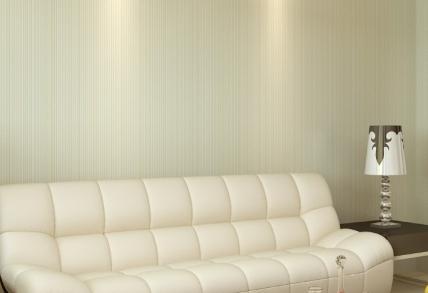How to glue vinyl wallpaper. Instructions for beginners
When choosing wallpaper for repair, pay attention toVinyl - very popular, comfortable, beautiful and practical. These wallpapers have two layers, the top one - foamed polyvinyl chloride, and the bottom one - paper or non-woven fabric. It is very convenient to paste vinyl wallpaper in rooms in new homes, because the elastic, slightly stretched wallpaper structure showed itself well during the shrinkage of the house, they do not tear, do not deform and do not peel off. There is a huge amount of vinyl wallpaper: for painting, embossed, patterned, various decorative effects. When buying wallpapers, compare the batch number, which should be the same on all rolls. How correctly to paste wallpaper? On the roll there is an instruction that shows in detail which glue should be used for their gluing, how to properly glue vinyl wallpaper, the symbols indicate their technical characteristics.
Preliminary preparation of the surface of walls
For high-quality stickers, you first needprepare the wall surface. A dense structural top layer of wallpaper allows to glue them on not very even walls with small defects. But their surface must be dry and primed. Before priming the wall, it is necessary to repair all cracks and visible defects with the help of putty. Priming the walls with a special primer, or diluted with water wallpaper glue. After the primed walls dry, you can proceed to the wallpaper sticker. Yes, it is recommended to remove skirting boards, upper panels of switches and sockets.
Kleim wallpaper
How to properly glue vinyl wallpaper? Actually, there are no special difficulties in this work. We measure the height of the wall and cut the roll with the wallpaper into strips of the necessary length (+ 10 cm). If the material has a picture, then before you cut the strip, it must necessarily be combined. By the way, wallpaper with a large picture is bought with a "margin", necessary to combine the picture.
The cut strips are spread on a smooth smooth surface with the wrong side up, displacing each by 10-15 cm. Preliminarily, according to the instructions, a special glue is made for this type of wallpaper.
Now carefully look at the instructions forhim, there are clues on how to properly glue vinyl wallpaper. There are three types of wallpaper: when sticking some, glue is applied only to wallpaper, another type involves applying glue to both the wallpaper and the wall. The third type of glue, applying glue only to the wall. In this case, it is not necessary to cut the wallpaper into strips, they are glued directly from the roll, but cut off already on the wall. To regret glue it is not necessary, put it densely and carefully that there were no not glued sites.
Glue wallpaper better with an assistant. One is located on top, under the ceiling, and the other from below serves a strip of wallpaper. It is better to start from the door, or from the window. First, using a level, you define an even vertical, which will be the starting point for starting work. Stripes of wallpaper glue butt, tightly fitting them to each other. On the wall, spread out with a special wallpaper trowel or a hard brush, and the joints are rolled with a rubber roller. You can not tighten the strips forcefully, rub them hard with a rag or brush, which can deform their facial layer. Wet wallpaper is quite vulnerable in this respect. In addition, if they are strongly stretched during gluing, then after drying they will shrink, and a gap will form between the strips.
How to properly glue vinyl wallpaper in the corner. For this, there are standard rules. A strip of wallpaper in the corner of the room is glued so that it slightly enters the adjacent wall, no more than a few centimeters. The angle is very good and carefully ironed with a spatula, the wallpaper should be glued in the corner especially tightly. The next strip is pasted on the next wall, starting from the corner along a flat vertical (it is determined by the plumb line).
Upper edge, if they are not glued to the veryThe ceiling is determined by a previously applied horizontal line. All possible irregularities formed during gluing are cut off after the wallpaper has dried with a knife.
The edge of the wallpaper from the bottom is also cut after dryingone or two centimeters below the upper boundary of the plinth. If the skirting can not be removed, then the lower edge of the wallpaper is bent inward 1 cm below the skirting and is well smoothed with a spatula.
In places where switches and sockets are located,wallpaper during work is not cut out. This is also done after drying, with a sharp knife. Then the edges of the cut are pressed by the panels of the sockets and switches that are screwed into place.
We tried to give the most general recommendations on how to properly paste vinyl wallpaper. However, this process is not difficult, the beginner will be able to cope.








